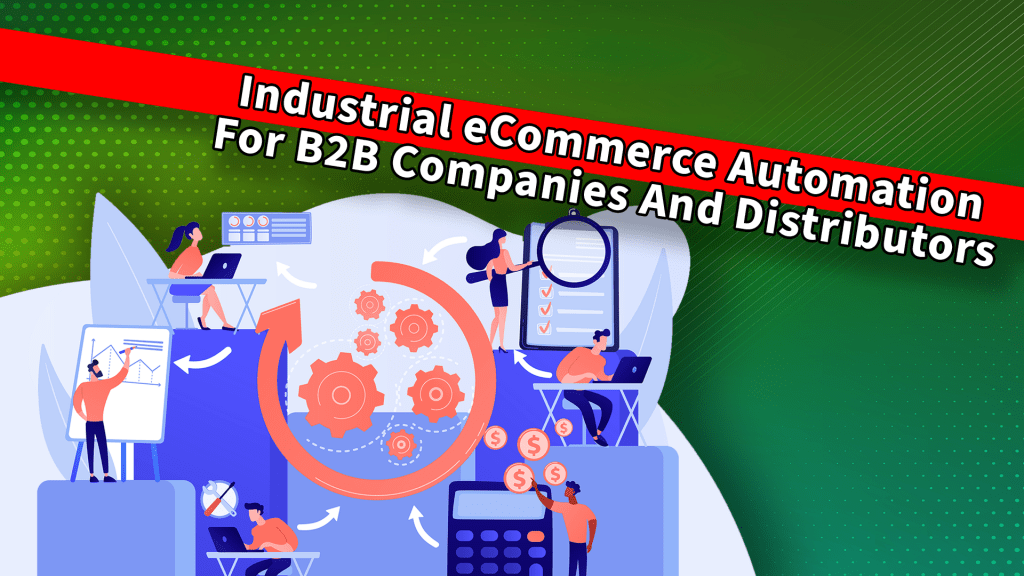In this week’s Surge Session, we go over the steps one needs to take in order to take on a custom software project for platform development, all the issues one might face during that process, and how to solve those issues as effectively and efficiently as possible.
At Optimum7 we hear the same request from a lot
of different clients; they want to increase their current operational efficiencies. A quick
example: let’s say I have five different websites but don’t want my team to
have to log into five different sites or accounts to process orders because I have only one warehouse as this
becomes a bottleneck for employees trying to do their job efficiently.
When we get a business problem like this, we consult through these phases of discourse:
- First, we offer a customized software development.
- Second, we discuss building the business out of an existing platform.
- Third, we offer a middle ground that customizes an existing platform to
solve their business operational problems.
If faced with software, automation or integration to improve your processes, what path would you
choose?
This is one of the most common issues in the eCommerce industry: one company with multiple websites with
issues arising from how to manage inventory, shipping rules, wholesalers, etc all from just one platform.
No existing eCommerce platform covers 100% of all business needs. Everyone has something unique about their
business that the platform doesn’t cover which is why we offer customized solutions.
It’s too much to compete with the giants like Amazon and Wayfair and Overstock, so first identify the
problem. What’s the scope of work and what would simply the workflow? Put this
statement of work together to present to your software developer as this is the most common challenge we face
when hearing requests from prospects or clients.
But let’s get real, most business owners are not technical, so it would be better if your operations manager,
or whoever knows the platform best, can guide you through that process helps puts this together before speaking
with developers. With the technical and business side of things laid out, an execution strategy for a customized
software platform can begin to take place.
A statement of work basically means a paragraph stating what the problem is and how you think the problem can be solved – whether by third party platform, a patch, or an integration.
After the statement of work comes the scope of work. What scope is actually?
Scope is a phase where we go through the production process from top to bottom identify the pinpoints of what’s happening in the process. Learning what the issues, we identify all of those pinpoints to try and find a solution for them. From the technical standpoint, it’s how we need to solve this issues. To be clear on how much detail is needed, this document could be up to 20 pages long, with no small detail being irrelevant.
As mentioned, it should be a combined effort from the operations manager and the business analyst of the company. After they have met with our developers, we can discuss timeline and budget with the right expectations.
Understanding that these talks can take hours, we can’t offer free consultations. This is why the more prepared you are with ideas for a solution from a functionality standpoint that developers can create, the less you’ll pay for our time. Make it as easy possible for us to understand your business and inject ourselves into your operation. Setting up retainer fee is a good way for everyone to be confident in accomplishing the project without feeling taken advantage of since there are too many unknown variables throughout the process that can be set in stone from a first consultation.
If this sounds intense, think of it this way: if a project will require hundreds of hours for execution, then you’re most likely going to need up to 30 hours for the scope of work. The more complex, the more detail is needed in the scope and the more time that will be required to execute it. For us to build the right base we need to have all the details upfront.
With the basic scope of work in place that you’ve done, you should be prepared to pay anywhere from $2,500 to $50,000 for us to do an advanced scope based on the complexity. An advanced scope is up to 40 and sometimes even 100 pages of fine detail including wireframes, workflow diagram maybe makeups that you can give to a technical team or a team of developers so that accurate expectations and pricing can be known up front.
Obviously, not everybody can afford $5,000 – $20,000 for an advanced scope. But if your business operations are generating more than a million dollars it should be okay for you to pay $5,000 – $10,000 for scope up when you’re expecting to spend up to $40,000 on a platform integration that makes your process a lot more efficient, allowing you to grow and scale. If you’re doing any kind of eCommerce or online lead generation you need to be scalable which will happens through technology.
If you have a project that’s over $75,000 – $80,000, you can always open it up for bid. Offer the scope of work and review different bids on how they will accomplish the task, but before sharing the scope, sign an NDA with any bidders. Remember that the scope of work is a detailed document that you just spent a lot of money. You wouldn’t want to just give it to anybody because they can take it and they can execute it themselves.
The scope of work is a very difficult phase that a lot of people don’t go through and instead just wing it but ends up costing them hundreds of thousands of dollars in the long run with nothing to show after all the time wasted on project lacking accurate scope. Optimum 7 has been there which is why we want you to come to us ready to do it right the first time. Whether you do the project with the same one that did the scope or not, it cannot be overemphasized how important it is for developers to have this in order to set the right expectations in budget and timeline.
A word of caution for custom software platform: do not post it on outsourcing sites like Upwork. Upwork is for projects that are a few thousand dollars here and there. If you want good complex solutions then you have to do this with an experienced company.
Based off an execution schedule with expectations, milestones, different deadlines rights, then we assign a team to do it based on the size of the project. Different teams might include the copywriting team, the marketing team, technical team – sometimes even the financial team. How do you handle the communication between them? Imagine 200,000 products from let’s say SAP to Shopify Plus or Bigcommerce enterprise or 301 redirects you have to customize and integrate.
First off, when you’re working with a migration of that magnitude you no longer have individual teams – you now have a dedicated team comprised of those specialties working on and dedicated to that project. They communicate frequently and any lapse in communication can’t be afforded. Attention to detail is crucial.
Assign the team a project manager(s) and a business analyst.
- Project managers make sure that the execution is done and continue to handle certain parts that are being broken down. If it’s a big project we use content management systems like Jira and Confluence. We break it down in the CMS and different developers, the project manager take it forward.
- Even when we do a scope when business owners or clients will change their mind. It then means we have to go through a scoping process with the business analyst and be clear with the client that this is going to change expectation instead of cost and timeline.
Most people don’t understand how costly changes are to a scope of work. They might say, “It only took two days providing you the access information.” But, they don’t realize that they are so many dependencies for a six-month execution. At the end, it may mean that you’re delaying the project 30 days. Talking about it now sets the expectations for the client in case it happens.
We spend a lot of time talking about the importance of a detailed scope of work for the client. But, we fail to mention how important a detailed scope of work is for the agency.
Of course, with our experience, we know how vital this is, but a lot of agencies fail to recognize how important it is to not cut corners or be very broad in their statements about their scope of work in order to make the sale. At the end of the day, when a change of scope comes, as a result, the agency and clients will be frustrated saying, “No, we never agreed to that.”
When signing agreements, state flat out the ownership of things like
- Hosting Account
- Source Code
- The Web Services
For example, you can use Microsoft Word but you don’t own the source code for Microsoft. So, there are different relationships; if you want me to build a platform for you and own the code, it is going to cost a lot more than if you want me to build and own it, which allows us to sell it to other clients.
Don’t ever continue working with an agency that does not want to give you access or that wants to block access and gives no option to control ownership. Unless they have web services or API services, then you have a relationship like you would with Microsoft or Apple which would never give you access to all the technologies happening in the background.
For example, we have created systems for multiple industries, one of them being the healthcare industry with an RMI system (Return Management System).
Some of this equipment is very expensive so they have a warranty. If I buy a medical device and am having problems with it, several questions are raised.
- How can you return it so we can we fix it?
- How do we know if it’s within warranty?
- Where do I track that on a different database with a serial number?
- If it’s not within warranty how much is it gonna cost for us to fix it right?
- How do I get a replacement while mine is being fixed?
- How does the company track this replacement for an item that is on warranty?
- How do we make sure that item has been returned?
All that we are tracking might be done on a spreadsheet but then other problems might happen as a result with users changing stock, dates, etc and you’ll never know who did what.
We can create a custom solution with different rows, with different access that tracks every device with specially defined points including the history of changes within that point based on the serial number of the device. Then identifying if the item is on warranty or not will depend on the manufacturer, but we were able to fix that through a custom solution based on the scope provided by the client.
Another industry examples include logistics industries, education industries, insurance companies, and of course eCommerce websites.
Another example with insurance companies. Most important for them is lead generation and they’re selling different types of insurance. You don’t really provide the insurance as you are a broker. The company needs to get real rates through multiple API integrations into different systems so you can get real-time rates for customers wanting to buy insurance based on all sorts of different variables.
Most of those APIs in the insurance industry don’t exist, so they use custom systems. If there’s no API, then there isn’t a place where we can grab the information, so we might create our own API for the client. They might add EDI or SML or some kind of data source which we are experienced with as well.
When a prospect comes to agency or a developer and says, “Have you done this before?” It doesn’t matter because if you’re a custom developer chances are you haven’t done it before.
Clients don’t expect to pay so much for a development. We’ve talked about all these different details but it is not easy and not everybody can do this.
At Optimum 7 we challenge you with the same question we give our prospective clients:
If you make a Custom Software Platform, how much are you trying to make money from that software?
Do you want to sell or license it? If it is fixing a business problem, how much will that platform help you grow? We will ask this question directly to our clients. If they say a million dollars but balk at the cost estimation of $90,000 then perhaps they’re not ready to make a million dollars.
This also applies to how much money the software could be saving them. If they’re trying to reduce their personnel with software that can handle what they’re currently doing manually, then it’s the software worth at least that person’s salary up front before saving you money for years
If we quote you $90,000 and another company quotes you $10,000 then as we talked about before with cutting corners or giving broad strokes when talking about the scope, then surely they’ll realize at some point that they can’t get the job done. You’ll come back to us but end up spending more money with the money you lost and more importantly, the time you lost. The only asset that you cannot get back is time. You can always make more money but you will never get back that time.
Ask the experts at Optimum 7 any questions you have on the extensive services we provide. If you need a custom software platform to take your business to the next level efficiently and effectively, we’re ready to waste no time in helping you get started. Contact us today.





